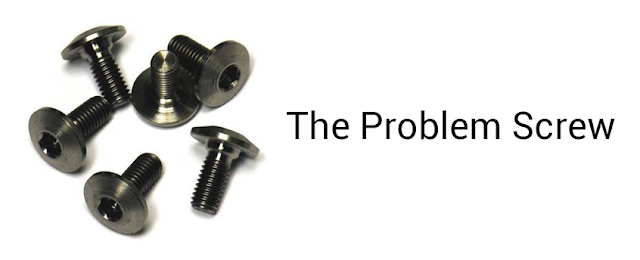I have been discussing the implementation of Microlearning projects with clients and colleagues. It should be obvious to me, but I failed to recognize that many professionals including designers, learning and training specialists, "are chained" to certain habits.
Micro-Actions Versus Micro-Content
The concept revolves around the situation of a worker carrying out tasks at work. In the process, the worker applies Micro-Actions: Often, the worker wants to fix, change or find a new solution and uses experience and/or seeks out answers from others or documentation. The worker applies the answers and learns something along the way.
"I have this screw that does not seem to
fit onto the equipment. I tried several ways and I could not make it
work. So, I checked the documentation and confirmed this screw is the
correct one. I tried again with another twist and still continued to
fail. So, I checked my colleague. He said the same thing. It is
particularly difficult to use this screw. Finally, I called the
supplier wanting to know if the screw is the correct one and expressed
my frustration. The supplier said, screw no. xx2, is the same as xx3.
But it has to be heated slightly before it can fit exactly. Based on
this I learned that there are temperatures that affect the use of some
screws and to factor this in the next time."
The worker in the above situation applied Micro-Actions. This happens in an instant. The focus is on solving problems and fixing things immediately.
When I presented this situation to the designers and trainers, their solutions were not just surprising, they threw me off. I was expecting them to provide a quick solution or an instant direction to the workers. Instead, they provided lengthy details and elaborate content like these answers:
- Complete checklist
- How-to procedures
- More product information
- Quality control steps
Unchained from Content to Actions
To help in unchaining "now" habits to new habits required in Microlearning, I summarized the very simple steps of Micro-Actions.
Micro-Actions
- Workers want to fix, change and find new solutions
- They use their experience, ask others and check documentation and resources
- They apply ideas to fix the issue
- They learn how to fix similar future problems
- Low effort
- Fast
- Easy
- Quick to apply
"The ZAP Microlearning Principles is one key idea learned during the Microlearning for Disruptive Results - An Action-Driven Online Workshop
Focus on Work Conditions of the Worker and Learner
It became clear to the designers and trainers and my clients that in Microlearning, the focus is the worker and learner while in action at work.
It became clear to the designers and trainers and my clients that in Microlearning, the focus is the worker and learner while in action at work.
Other lessons learned:
- The completeness and thoroughness of the content does not support Micro-Actions.
- Complete and elaborate content slows down or worse, are ignored and not accessed by workers when implementing Micro-Actions. They become nuisances, not productive tools.
- Designers and trainers need to "unchain" themselves from thinking of content instead of solutions for workers on the job.
Although it seemed simple, I realized Microlearning challenges us all to think differently. Focus on Micro-Actions, not Micro-Content.
References
How to Create 5-Slide Microlearning - Tiny, Succinct, Fast
Capture Financial Impacts of Microlearning - Download the 22-Page Case Study
Breaking 10 Training Rules Using Microlearning
How to Add Depth to Micro-Ideas
Ray Jimenez, PhD
Vignettes Learning
"Helping Learners Learn Their Way"







No comments:
Post a Comment
Welcome! Sharing your comments is very valuable learning experience for me and others. Thanks!